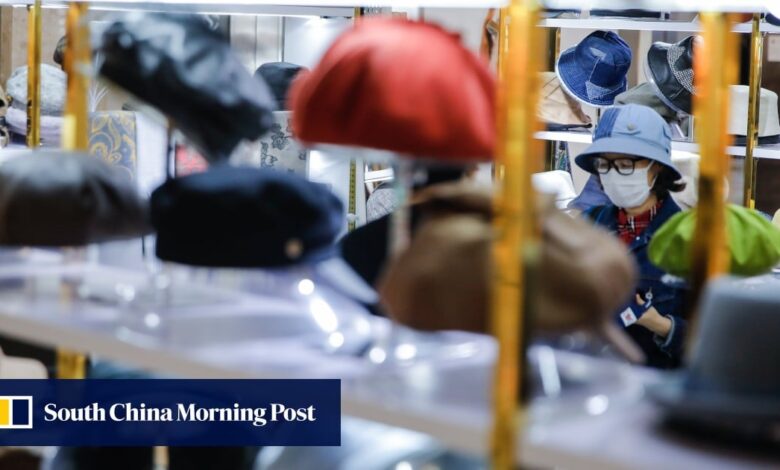China GDP: economic resilience questioned as property cloud lingers, even with 2023 growth target in sight

“[A] hard landing in the property sector has not met with effective responses, meaning that it will remain the biggest downside risk in 2024”, said Tianchen Xu, senior China economist with The Economist Intelligence Unit (EIU).
A local government debt crisis, weak investor and consumer confidence and intensifying US-led tech curbs are also adding to questions over China’s economic growth sustainability.
And despite increasing tailwinds, including a robust industrial sector, improving consumer spending and the bottoming out of global trade, policymakers should not sit on their laurels, added Xu.
The pickup in the third quarter was largely driven by stimulus measures and a summer spending spree, as retail sales grew by 5.5 per cent in September, compared with 4.6 per cent growth in August.
“China’s economic recovery continued in September, driven by better-than-expected retail sales,” said Zhang Zhiwei, president and chief economist at Pinpoint Asset Management
The key issue is what growth target the government will set and how much fiscal easing will take place
And according to NBS deputy director Sheng Laiyun, China only needs year-on-year growth of 4.4 per cent in the fourth quarter to achieve its full-year target.
“We’ll focus on boosting effective domestic demand, invigorating market entities and implementing already released policies … to accomplish this year’s social and economic development goals,” he said.
Zhang added the focus of the government and the market would shift to the growth outlook for next year.
“The key issue is what growth target the government will set and how much fiscal easing will take place,” he added.
But Moody’s Analytics economist Harry Murphy Cruise warned that China’s economic recovery is still in its infancy, with real estate investment falling by 9.1 per cent in the first three quarters compared with a year earlier.
“With the property market’s deterioration showing no signs of slowing, a black cloud lingers overhead,” he said.
“Direct support for households could be the aspirin needed to shake the property hangover, but such support looks increasingly unlikely.”
Elsewhere, fixed-asset investment expanded by 3.1 per cent in the first nine months of the year, compared with the same period last year, down from the 3.2 growth per cent in the first eight months.
Is there still a window of opportunity for China’s GDP to surpass the US?
Is there still a window of opportunity for China’s GDP to surpass the US?
In September, industrial output just missed expectations, rising by 4.5 per cent, unchanged from August.
Capital Economics said its own gauge of economic activities suggested growth slowed from 1.3 per cent, quarter on quarter, in the second quarter to 1 per cent in the third.
“But even [our gauge] suggests things are starting to improve again. In monthly terms, it shows that output bottomed out in June, with the economy since regaining some momentum,” they said.
“That is a trend that appears to have continued in September, judging by the latest activity data.”
The EIU’s Xu said the economic data is expected to be glossed over to a certain degree, but it largely reflected the real state of the economy.
“If the data is bad beyond repair, there won’t be any ways to make it look good,” he said.
Due to the massive size of China’s economy, this deceleration process shows strong inertia
The dramatic divergence between positive macro data and weak housing-led sentiment would also make it challenging for the fourth quarter to see solid sequential acceleration without additional stimulus, said Oxford Economics.
“The extra-long heavily loaded train that is China’s economy, affected by various factors at home and abroad, has already shown a trend of slowing down,” independent think tank Anbound said on Monday.
“Due to the massive size of China’s economy, this deceleration process shows strong inertia. Once the slowdown begins, it will be difficult to use phased policies to stop the slowdown.”
“Medium-term potential growth in China is projected to slow amid uncertainty about the underlying moderation in productivity and labour force growth,” it said, while calling for productivity-enhancing reforms.





